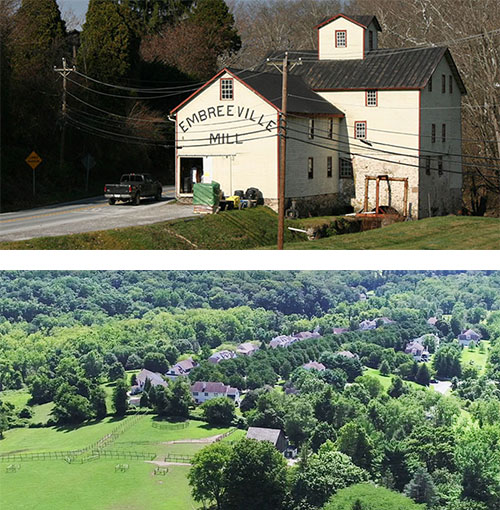Implementing Good Development Practices to Protect our Natural Resources
Posted January 14, 2022

One of Chester County's most treasured characteristics is its natural beauty and open space — from the rolling hills and streams, to the picturesque villages and small towns. Since many people choose to live or visit the county to enjoy these qualities, it's important to follow good development practices to ensure these natural resources remain in place for years to come and generations to enjoy.
In some instances, these resources can be protected in new developments by implementing performance zoning and cluster development regulations within a community.
Performance zoning, sometimes called "impact zoning" or "flexible zoning," is a method of regulating the design and location of a development based on factors that relate directly to the development's site and its specific effects on a neighborhood. Performance zoning is a way to make traditional zoning more sensitive to the nature of specific development sites and can be used in both residential and non-residential developments.
In addition to identifying site features that should be protected, performance zoning can examine the impact of the development on the neighborhood and community, such as lost viewsheds, development that is incompatible with community character, and increased traffic. To ease these impacts, performance zoning might require less intense development, changes to a development design, or improvements to adjoining roads.
Examples include Newlin Township, which has used performance-based zoning since 1990, and communities in Bucks County, which was at the forefront of developing performance zoning regulations in the 1970's. View the performance zoning eTool.

Like performance zoning, cluster development is used to preserve open space and direct development away from natural, scenic, historic, and agricultural areas by limiting construction to smaller areas of the site. Depending on the type of design and the regulations that apply to the cluster development, up to 75 percent or more of a site's land area can be preserved in permanent open space using a cluster design.
Establishing appropriate design standards for cluster development is essential to ensure that its visual impact is not greater than that of a conventional development. To achieve the full benefits of cluster development, natural features and existing site conditions should be given high priority early in the design process.
Some examples of cluster development include Kennett Township which provides an Open Space Design Option that protects up to 70% of the site's open space, depending on the zoning district; East Brandywine Township's Subdivision and Land Development Ordinance, which includes a requirement that the site design and layout of preliminary plans demonstrate that the applicant followed a four-step conservation design process that prioritizes the protection of natural features into the planned open space; and Willistown Township, which has an Open Space Conservation District that is an overlay district that applies to any parcels 15 acres of greater that are zoned for residential use. View the cluster development eTool.
The Planning Commission's eTools cover a wide array of planning topics from natural resources to economic development. The tools are easy to read, providing a quick overview of each topic, a brief explanation of how it works, and considerations for addressing the topic or regulating use. An alphabetical listing of eTools is available in our Municipal Corner.

